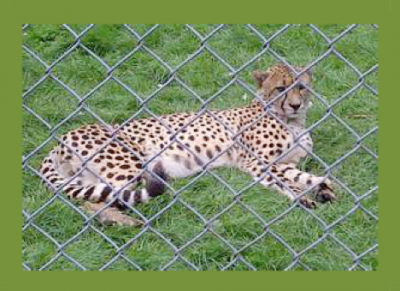News
Latest Lion Aid News
Cheating with cheetahs?
Tuesday 10th February 2015
|
Where did you come from?
There has been some attention paid recently to the illegal wildlife trade of cheetah and lion cubs for the pet trade in the United Arab Emirates from eastern Africa. Profits are made from smuggling these cubs via Somalia, Eritrea into Yemen and then onward to the UAE. Two-thirds of the smuggled animals are estimated not to survive the long journey.
Some interest has now been sparked by this apparent ability of South African cheetah “breeders” not only to maintain their breeding populations but also to provide many “captive bred” cheetahs to the rest of the world. “While the captive cheetah industry in South Africa plays an important role in raising awareness and generating revenue for local economies, the trade in captive animals in South Africa was flagged as a threat to cheetahs within the country and in neighboring countries as well (especially Botswana). Strict national oversight is required in South Africa of captive breeding operations and export trade to ensure adherence to regulations and that CITES permits or certificates are not issued for illegally sourced wild cheetahs.” Reading between the lines of the bureaucratic language, it says South Africa is suspected of augmenting their captive cheetah population and their live export numbers by smuggling wild-caught animals. Botswana is specifically mentioned as a source country, but there is also evidence that cheetahs are smuggled in from Namibia and perhaps Zimbabwe. Mmegi: Let’s go to the beginning. What really prompted you to venture into predator smuggling? BF: Poverty. I could not provide for my family, and the money those guys gave us was really enticing. We used to make a killing - P10,000 or P15,000 per trip per animal [$100-$150]. One can make around P25,000 [$250] nowadays. But that’s nothing compared to what these Boers [South African whites] make: R250,000 [$25,000] per cat! Mmegi: Can you tell us how you guys catch the big cats?
BF: It is very easy. Cool as a cat, especially the cheetahs. All you do is chase it with a vehicle until it flops in a heap from fatigue. It just lies down helplessly as you put a blanket over its head. You need a blanket because you don’t want your eyes to be in direct contact with the cheetah’s eyes because it could wake from its slumber and attack you. After thus blindfolding the animal, you tie it up with ropes on its legs and paws and then put it in a sack the way you do with your domestic cat.
Mmegi: What does the future hold for you? Are you willing to work with the authorities to expose the syndicates?
BF: Absolutely. I don’t want to rot in jail. I have kids to take care of. Some of the syndicates are in Bogogobo, Middlepits and Kolonkwaneng. Some are right here in Tsabong but you cannot tell them apart from everybody else. They venture out when the bars close and return in the early mornings to continue with their normal lives. Some are public servants, among them BX [Government] drivers, council employees and wildlife officers.
In other words, a well-organized smuggling organization involving many willing cheetah catchers financed by willing buyers. So let’s give equal attention to what is going on in South Africa, where an illegal trade seems laundered by a legal trade, to what is happening with the smuggling from eastern African to the UAE.
Picture credit: www.zoochat.com
Tags: South Africa, trophy hunting, cheetahs, illegal trade, smuggling, UAE, captive breeders Categories: Events/Fundraising, Trophy Hunting |
Posted by Chris Macsween at 19:41
No comments have been posted yet.
Add a new comment
Existing user
New user sign up




